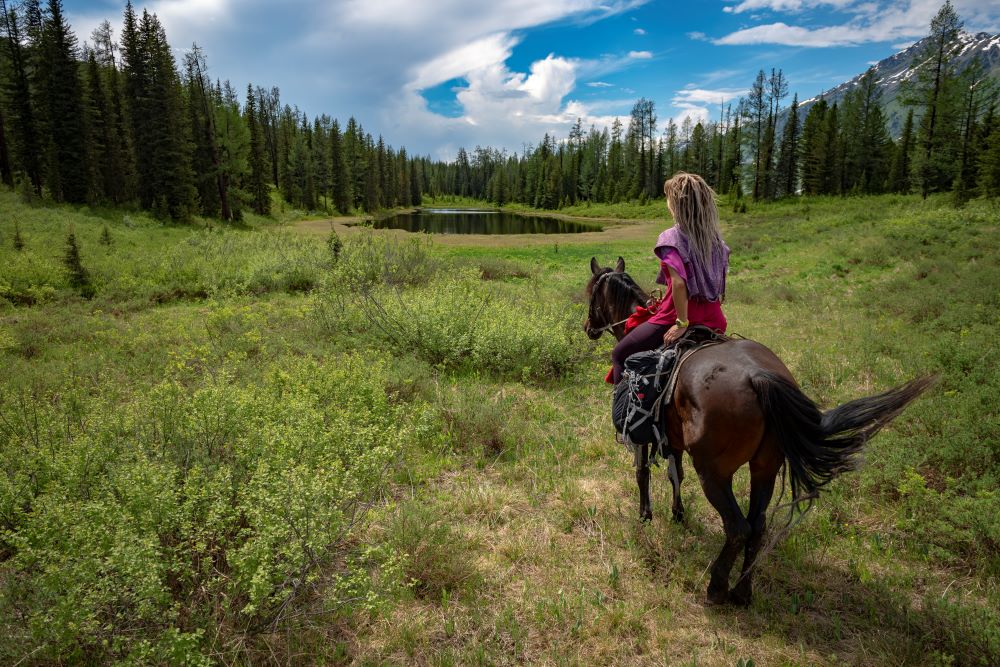When the BIOFIN process began in Kazakhstan about ten years ago, it was realized that funding for protected areas was limited. The government wanted to change this with the support of UNDP-BIOFIN. Initially, a clause was included in the 2017 law on protected areas. This clause states that the management plan for each protected area should be funded. More recently, developing a new generation of management plans for protected areas has been supported. This work has paid off and the available budget for protected areas has increased significantly, reaching US$ 70.3 million in 2023, a threefold increase compared to 2018 and a doubling compared to 2022.
As of 2023, Kazakhstan has designated over 29 million hectares as protected areas, covering 10.77 percent of the country's land. Aligning with the global "30x30" target - to protect 30% of the planet for nature by 2030 - UNDP BIOFIN has supported Kazakhstan in establishing eight new protected areas and expanding three existing ones, adding a total of 6.1 million hectares to its conservation lands. Here's how it all began.
Legislative changes and support from UNDP-BIOFIN
In 2019, Kazakhstan introduced a financing solution aimed at increasing funding for its protected areas. This initiative was built on a clause that was added to the Law on Protected Areas in 2017, requiring proper management plans to receive funding.
In the following years, BIOFIN supported protected areas in updating management plans and initiated an online training programme for budget planning. By 2020, new results-based management plans were created for two pilot protected areas.
Photo: UNDP Kazakhstan. East Kazakhstan region
In 2021, BIOFIN finalized the methodology for preparing protected area management plans and launched an 8-hour online training on protected area budgeting via the Learning for Nature platform. The training covers budget planning, effective management plan development, and attracting additional funding, such as grants and donations. It also highlights various financial support sources, including the state budget, tourism services, sales of products and branded souvenirs. This course equips learners with essential knowledge on diverse funding approaches for protected areas.
"Many protected areas identify the lack of funding as the main reason for their ineffective performance of key functions, ultimately impacting biodiversity negatively. This course aims to reduce the funding deficit by improving the skills of protected area staff," emphasized Meruyert Sarsembayeva, Biodiversity Portfolio Coordinator in Kazakhstan.

In-person and online workshops on budgeting for protected areas were organized throughout Kazakhstan. From 2020 to 2023, more than 100 employees of protected areas were trained. Photo: UNDP-BIOFIN Kazakhstan.
In 2022, an expert group was set up for ongoing consultations and training. A new methodology for preparing management plans for protected areas was developed and approved, paving the way for the new management plans for 16 pilot protected areas. Over 10 independent forestry, wildlife, ecotourism and economics experts were involved in developing these documents.
In 2023, the legal framework for fees in the protected areas was revised and a recommended list of fee-based services and corresponding tariffs was developed. This will ensure annual growth in funding and the sustainability of financing.
Kaindy lake, Almaty region. Photo: UNDP Kazakhstan
Results of long-term efforts
These concerted efforts have yielded tangible results. The joint involvement of the Ministry of Finance, UNDP GEF programme facilitated the harmonization of protected area budgets. Training workshops on budget financing helped protected areas teams prepare high-quality budget submissions. As a result, the amount of budget funding for protected areas in 2023 has tripled compared to the base year 2018, totaling US$ 70.3 million. This is also a double increase compared to the previous year (2022) and a 55% increase over the target expectation.
_0.jpg)
Gulmira Nysanbayeva, Director of the Charyn State Nature Park, has already noticed the positive effects of the new management plan and the associated funding structure. “As a flagship park in the Almaty region, Charyn National Park has seen an increase in ecotourism but needs stable funding. The new management plan provides this financial stability," she says.

Photo: UNDP Kazakhstan. Gulmira Nysanbayeva has been working in the Charyn State National Nature Park since its foundation in 2004.
Yerlik Nakishev, Head of the Finance Unit of the Forestry and Wildlife Committee at the Ministry of Ecology and Natural Resources, acknowledges that despite annual budget increases for protected areas, current funding does not fully cover all planned expenditures outlined in the management plans. A significant portion of the budget is allocated to salaries, which is essential for attracting and retaining qualified professionals. “Nevertheless, the infrastructure of protected areas is gradually improving, and their performance is enhancing," he says.

Future directions
Looking to the future, UNDP-BIOFIN will continue its efforts on protected areas in Kazakhstan. Current work is focused on revising fees for protected areas, standardizing tariffs and ensuring price transparency. A draft decree on protected area fees, including a recommended list of services and tariffs, is expected to be adopted in 2024 to further strengthen the financial sustainability of Kazakhstan's protected areas.

Photo: UNDP Kazakhstan
Co-authored with Gulnar Maguzumova, BIOFIN Kazakhstan
Categories
Archives
- January 2026 (1)
- December 2025 (2)
- November 2025 (5)
- October 2025 (6)
- September 2025 (2)
- August 2025 (10)
- July 2025 (9)
- June 2025 (5)
- May 2025 (8)
- April 2025 (9)